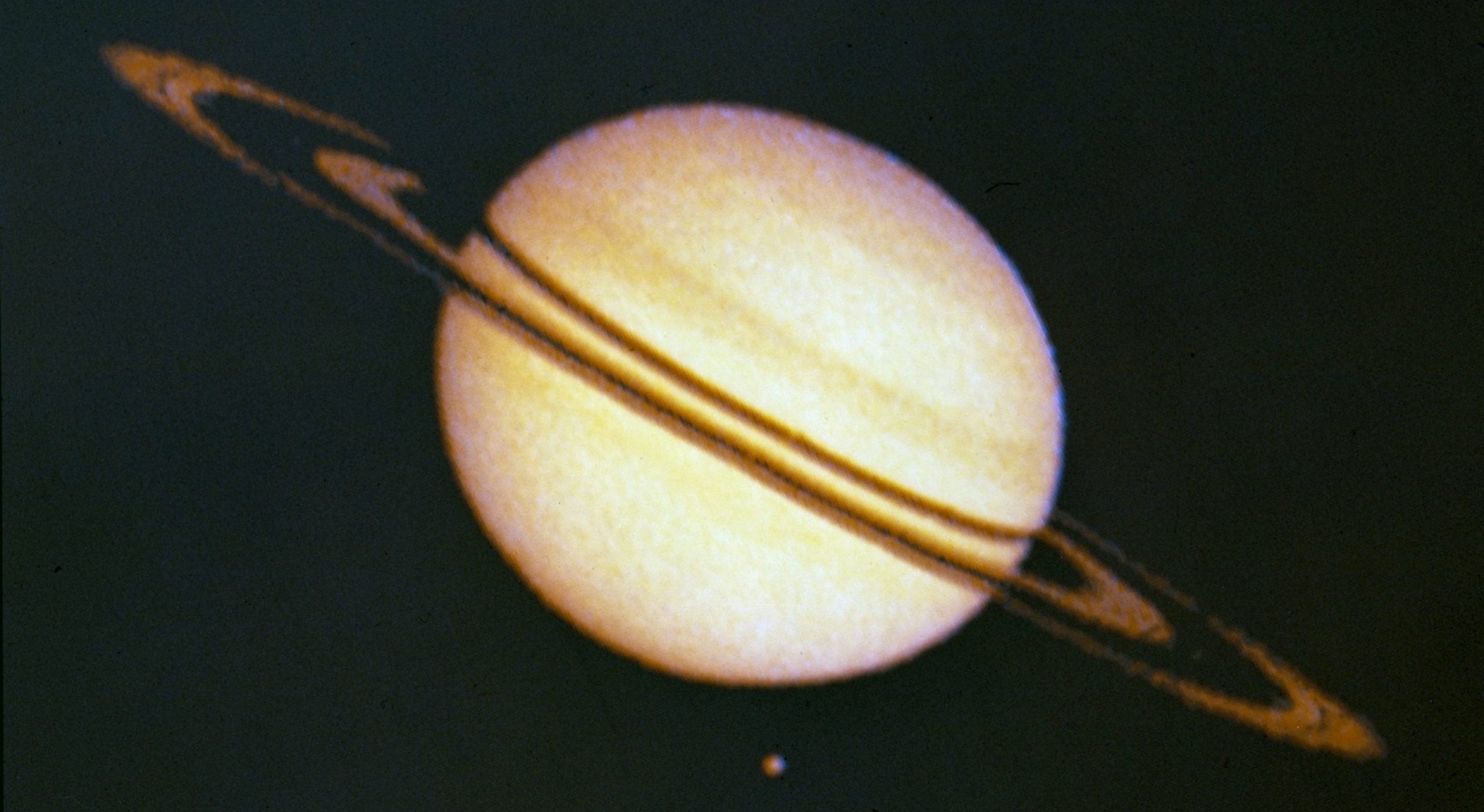In 1979, the American spacecraft Pioneer 11 became the first spacecraft to visit Saturn. It traveled past the planet at a distance of 21,000 km and conducted various measurements and transmitted photographs of Saturn and its satellite Titan.
Pioneer 11: Chronology of the Mission
Launch and Jupiter flybys
Launched on April 6, 1973, Pioneer 11 flew past Jupiter in December 1974, made a gravitational maneuver in its gravitational field, and laid down on a course towards Saturn.
Interestingly, the trajectory of its flight from Jupiter to Saturn was inclined by 15.6 ° to the plane of the ecliptic (this was the largest inclination at that time).
It is also interesting that after the flyby of Jupiter, the station first approached the Sun, then began to move away and crossed Jupiter’s orbit for the second time on June 10, 1977.

Original plan and trajectory corrections
It was originally planned that the station would fly between the inner D ring of Saturn and the planet at a distance of only a few thousand kilometers from the cloud layer in September 1979. It was then supposed to pass 10-20 thousand km from the surface of Titan.
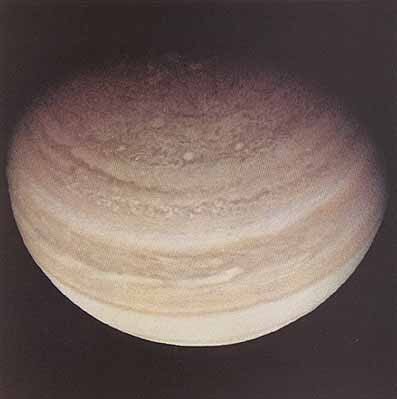
On December 18, 1975, the first correction of the trajectory necessary for a successful flyby of Saturn was carried out; on May 25-26, 1976, the second correction was made. Saturn was respectively 460 and 525 million km from the station during these operations.
Final trajectory
In 1977, the Saturn flyby trajectory was finally chosen. There were two options: internal and external.
The internal trajectory (between the rings and the planet) provided for the intersection of the plane of the rings at a distance from the center of Saturn equal to 1.15 planetary radii, and a minimum distance when flying 1.06 Saturn radii. The outer trajectory (from the outer side of the rings) – respectively, 2.8 and 1.28 radii of Saturn.
The inner trajectory would provide more scientific information, but the probability of collision with particles of the rings that could disable the station was four orders of magnitude higher than when flying along the outer trajectory.
Observations from Earth at this time showed that the region of the highest density of the substance of the rings extends to 2.2 radii of Saturn, however, faintly visible material has been recorded up to a distance of 3.5 radii of Saturn. As a result, an external trajectory was chosen.
Connection to the Voyager mission

When choosing, scientists were mainly guided by the desire to explore that part of the plane of the rings through which the Voyager-2 AMS would subsequently pass if they decided to send it to Uranus.
Compared to Pioneer 11, Voyager 2 was a very expensive station, and the scientists wanted to avoid risk as much as possible. Engineers emphasized that even when flying along an outer trajectory, Pioneer 11 would pass closer to Saturn than both Voyager spacecraft, which would provide unique scientific information.
On September 1, 1979, the station made a successful flyby near Saturn.
What did Pioneer 11 find?
Saturn’s magnetic field and magnetosphere
Pioneer 11’s instruments showed that Saturn has a magnetic field, a magnetosphere, and radiation belts.
For the first time, the station crossed the front of the shock wave of the magnetosphere at a distance of 24.5 radii from Saturn.
Later, the solar wind pressed the magnetosphere closer to the planet, and the station crossed the front of the shock wave for the second time.
During the distance from the planet for the same reason, the station crossed the front of the shock wave three times (the last time at a distance of ~100 Saturn radii from the planet).
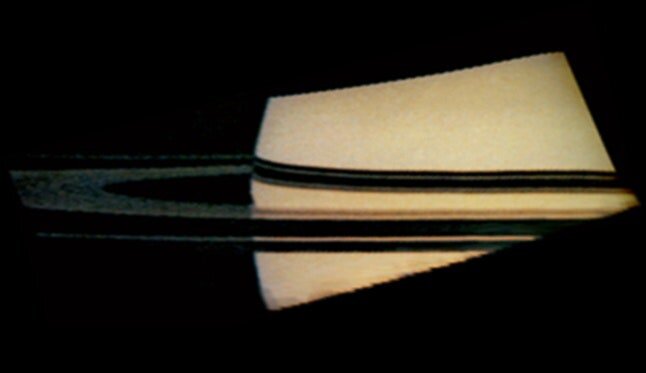
The strength of Saturn’s magnetic field at the level of the upper boundary of the cloud cover turned out to be 0.2 Gauss.
Since Saturn rotates faster than its satellites’ orbit, there must be a magnetic “tail” in front of satellites that are within the planet’s magnetosphere. This was found on Titan.
The intensity of radiation in the radiation belts of Saturn turned out to be 50-1000 times lower than in the radiation belts of Jupiter, and was comparable to the radiation intensity in the radiation belts of the Earth, although the latter occupy a 10-fold smaller area.
Saturn’s Rings
As predicted by some scientists, charged particles were completely swept away within Saturn’s ring system. This phenomenon is called the “guillotine effect”. It is explained by the fact that high-energy particles oscillating from one pole of the planet to another meet on their way the substance of the rings and are absorbed by this substance.
The Pioneer 11 station registered the A, B, and C rings of Saturn observed from Earth but did not detect the D and E rings expected by some scientists. The station discovered two new rings, designated F and G.
The F ring lies at a distance of about 80 thousand km from Saturn and has a width of less than 500 km with a thickness of only 3 km. It is separated from ring A by a gap ~3000 km wide, which was called the Pioneer division.
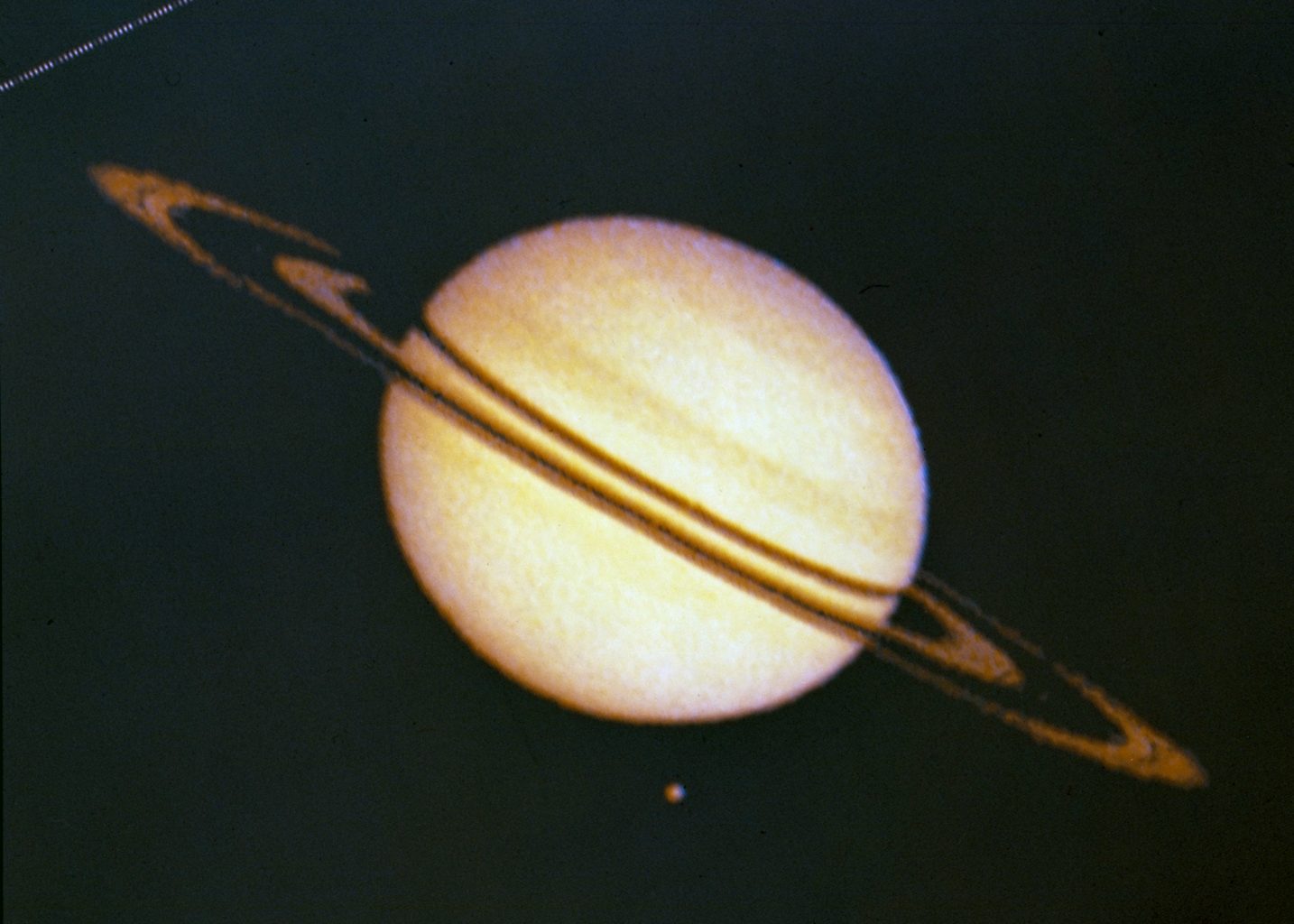
The G ring is located at a much greater distance from Saturn: the outer edge of the ring lies at a distance of 965 thousand km from the planet.
Pioneer 11 also registered the Cassini fission observed from Earth between the A and B rings and confirmed the existence of the fission between the B and C rings predicted by French scientists.
From the bands of reflected light, it was determined that the amount of matter in the Cassini fission is approximately equal to the amount of matter in the C ring.
According to preliminary data, the particles in the rings are composed mainly of ice, and not of heavy materials such as, for example, iron. Using an infrared radiometer, the temperature of the side of the rings illuminated by the Sun was determined: 70-75 K.
It turned out that the rings of Saturn do not pose a threat to spacecraft (before this flight, the probability that the station would pass intact through the plane of the rings was estimated at only 50%). Meteor particle detectors registered only 5 collisions with small particles outside the plane of the rings during their flight around the planet.

The thickness of the rings turned out to be 1.5 km, and the average particle size in the rings was about 50 m. Six episodes of absorption of charged particles were recorded, which, according to scientists, may indicate the existence of six unknown satellites of the planet.
Pioneer 11 took 15-20 images of Saturn with better resolution than the most advanced ground-based telescopes could provide. The images showed that the top of Saturn’s cloud cover is quieter than that of Jupiter and has less distinct detail.
Atmosphere, temperature, and gravitational field
The number of belts and zones in the atmosphere of Saturn turned out to be greater than in the atmosphere of Jupiter, and they are narrower. It was possible to obtain photometric and polarimetric data on the planet in a wide range of phase angles, which are inaccessible to ground-based observers.
The temperature of the equatorial zone of Saturn turned out to be lower than the temperature of the regions adjacent to it, apparently due to the fact that clouds are located higher in the equatorial zone. These data made it possible to assume differences in temperature and heights between zones and belts.
The characteristics of Saturn’s gravitational field, determined from perturbations in the station’s trajectory, showed that the planet’s polar oblateness is about 10%.
The ultraviolet photometer on the Pioneer 11 AMS detected a faint glow of hydrogen atoms throughout the Saturn system. When the station crossed the plane of the rings, it increased, which indicates the connection of the hydrogen cloud with the rings.
An increase in the glow was also observed at high latitudes of both hemispheres of the planet compared to the equatorial region. This may indicate auroral activity or limbal glow.
Discoveries about Titan
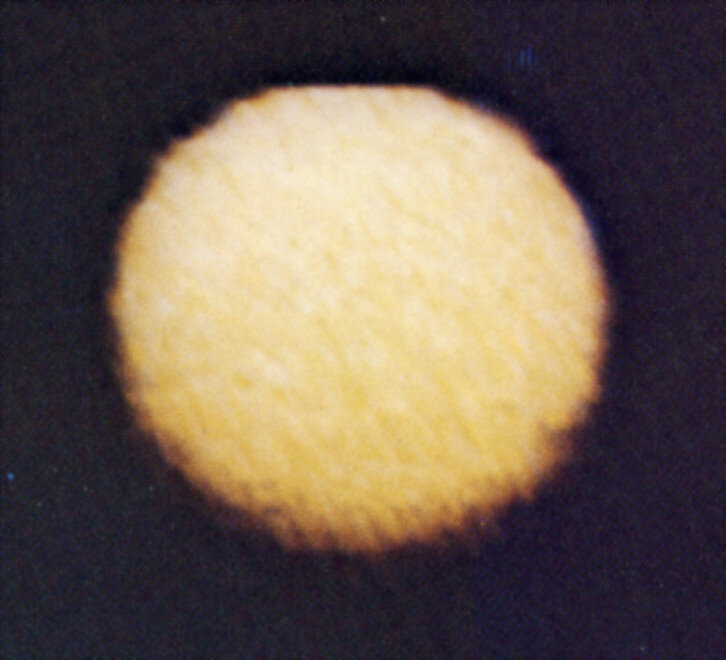
On September 2, 1979, Pioneer 11 approached Titan at a minimum distance of 356,000 kilometers.
The station’s ultraviolet photometer detected a hydrogen cloud around Titan. Based on this, it was concluded that perhaps the methane atmosphere of the satellite is slowly decomposing into hydrogen and more complex hydrocarbon compounds, with hydrogen escaping into space and carbon-based aerosols falling on the surface of Titan. According to measurements, the temperature of the upper part of the cloud cover of Titan was 75 K.
Under the influence of Saturn’s gravitational force, the Pioneer 11 AMS changed its direction of flight and began to move away from the Sun almost in a straight line.
Officially, work with the station was completed on September 30, 1995, due to a disruption of the radio signal reception zone from the station. The last signal from the station was received on November 24, 1995.
Join the discussion and participate in awesome giveaways in our mobile Telegram group. Join Curiosmos on Telegram Today. t.me/Curiosmos
Sources:
• Howell, E. (2012, September 26). Pioneer 11: Up close with Jupiter & Saturn. Space.com.
• Mars, K. (2019, August 27). 40 years ago: Pioneer 11 first to explore Saturn. NASA.
• Mars, K. (2019, December 2). 45 years ago, pioneer 11 explores Jupiter. NASA.
• NASA. (2019, July 16). Pioneer 11: In Depth.
• Planetary Data System. (n.d.). Pioneer Saturn Archive page.
• The Planetary Society. (n.d.). Pioneer 10 and 11, outer Solar System explorers.

